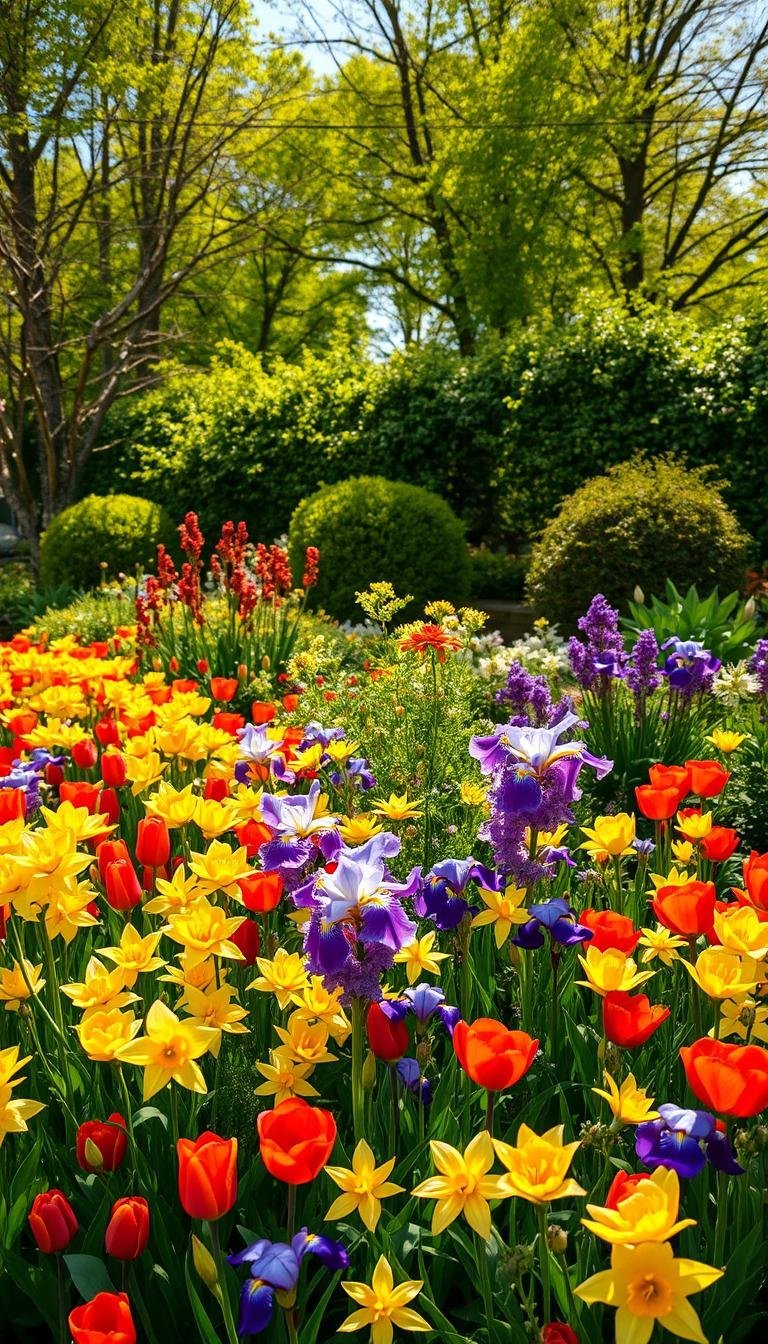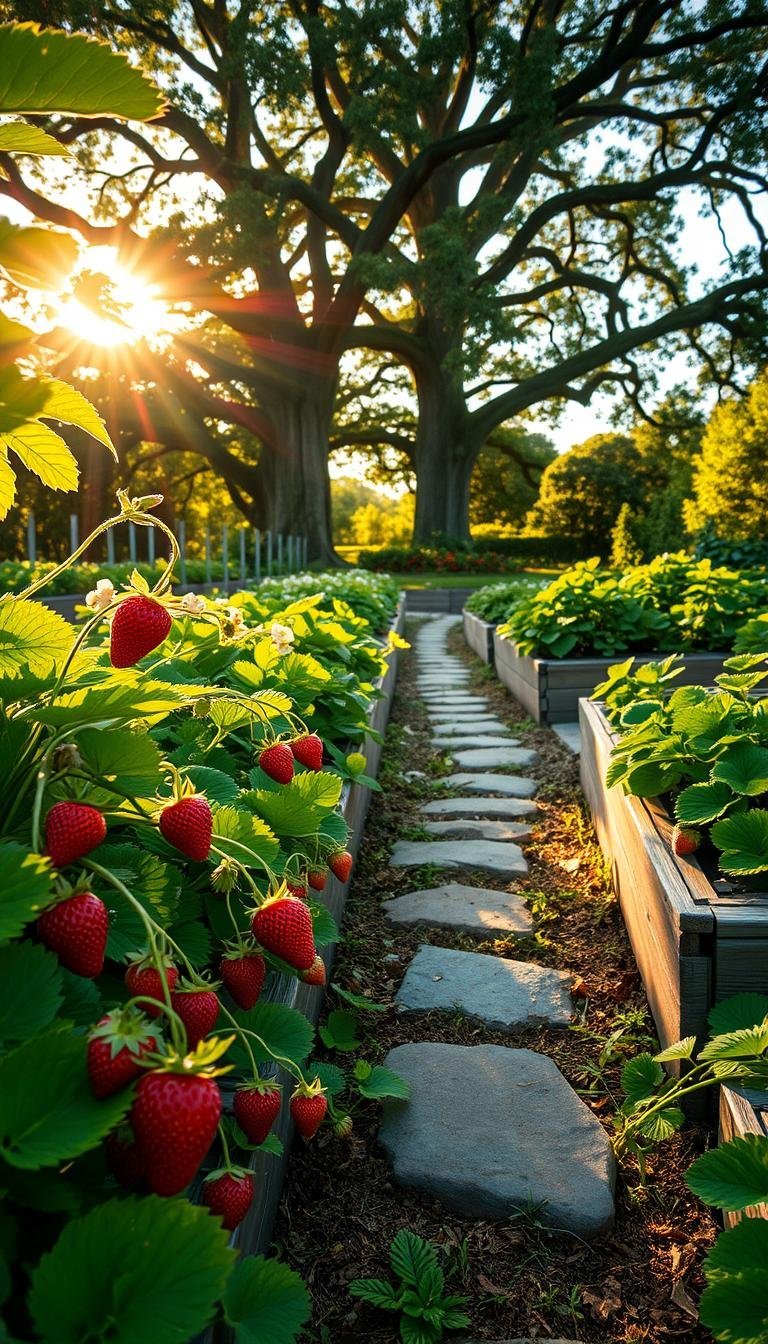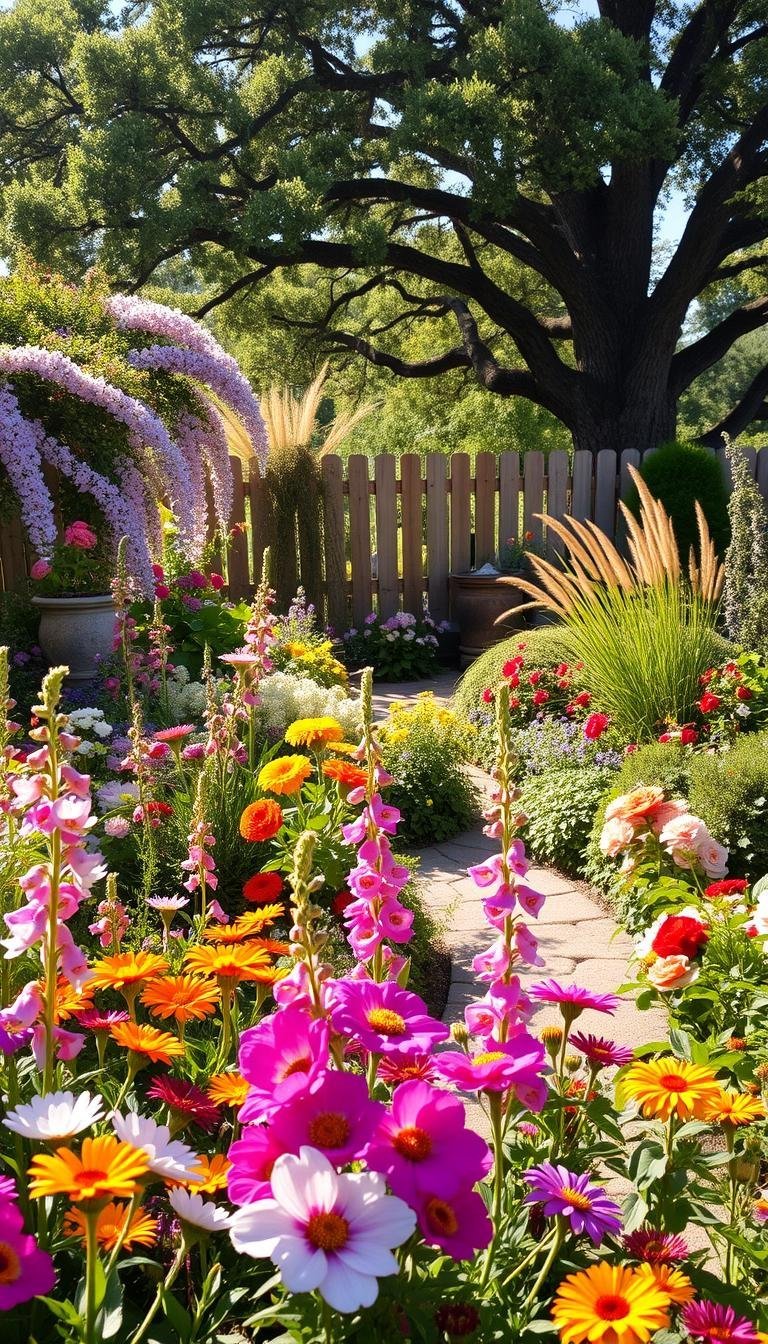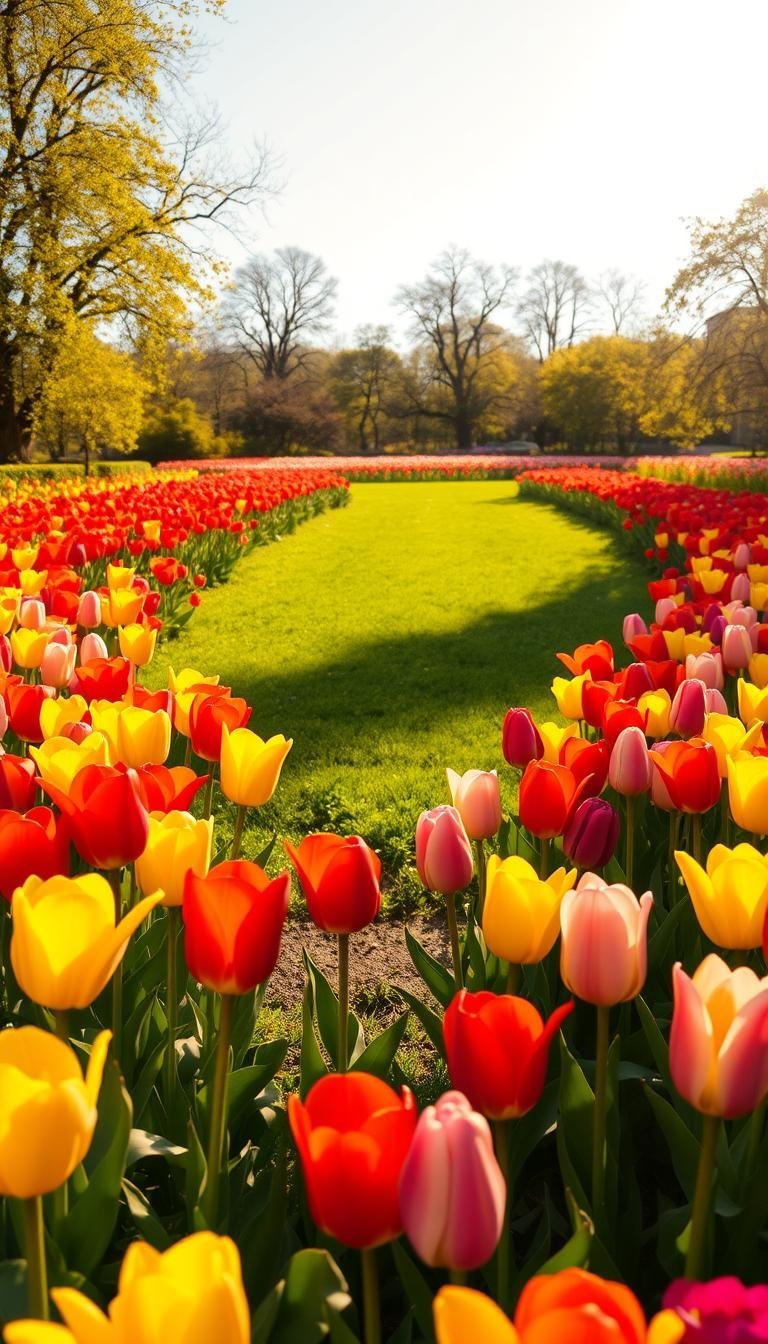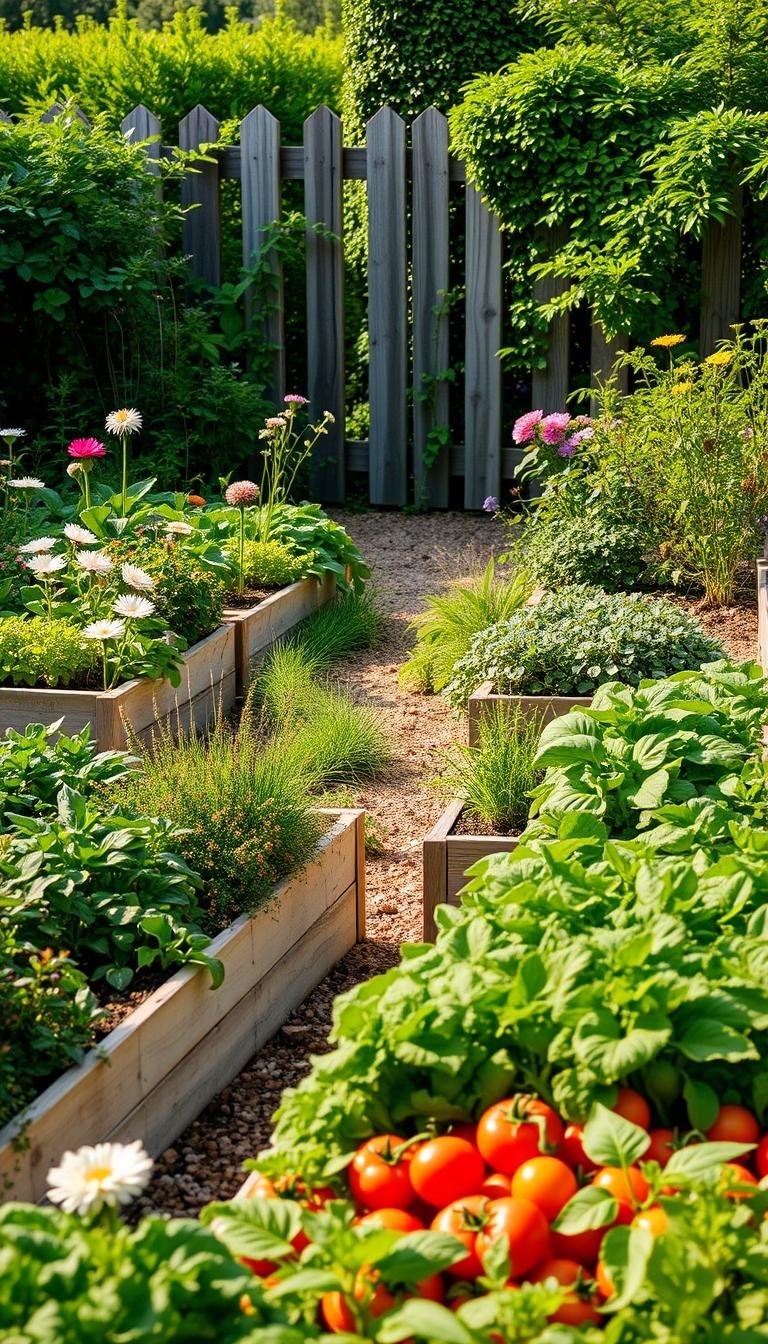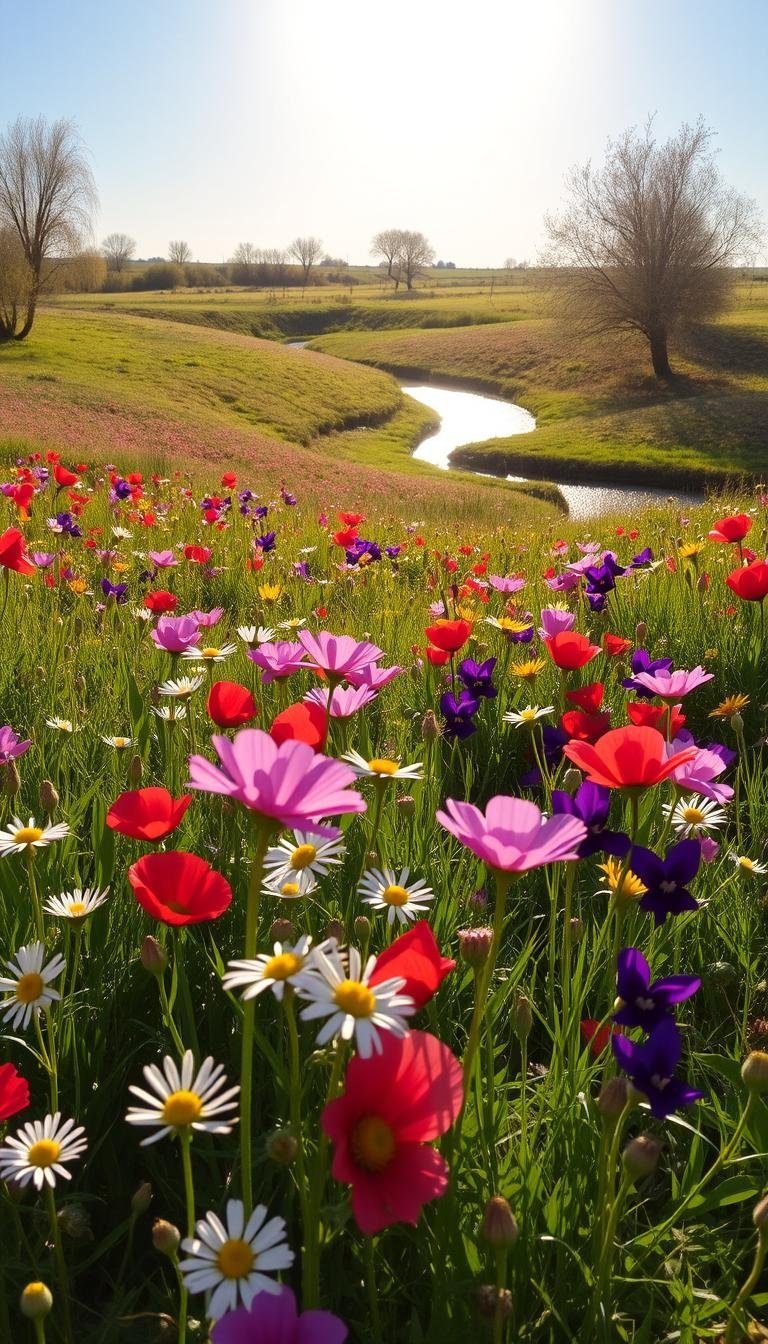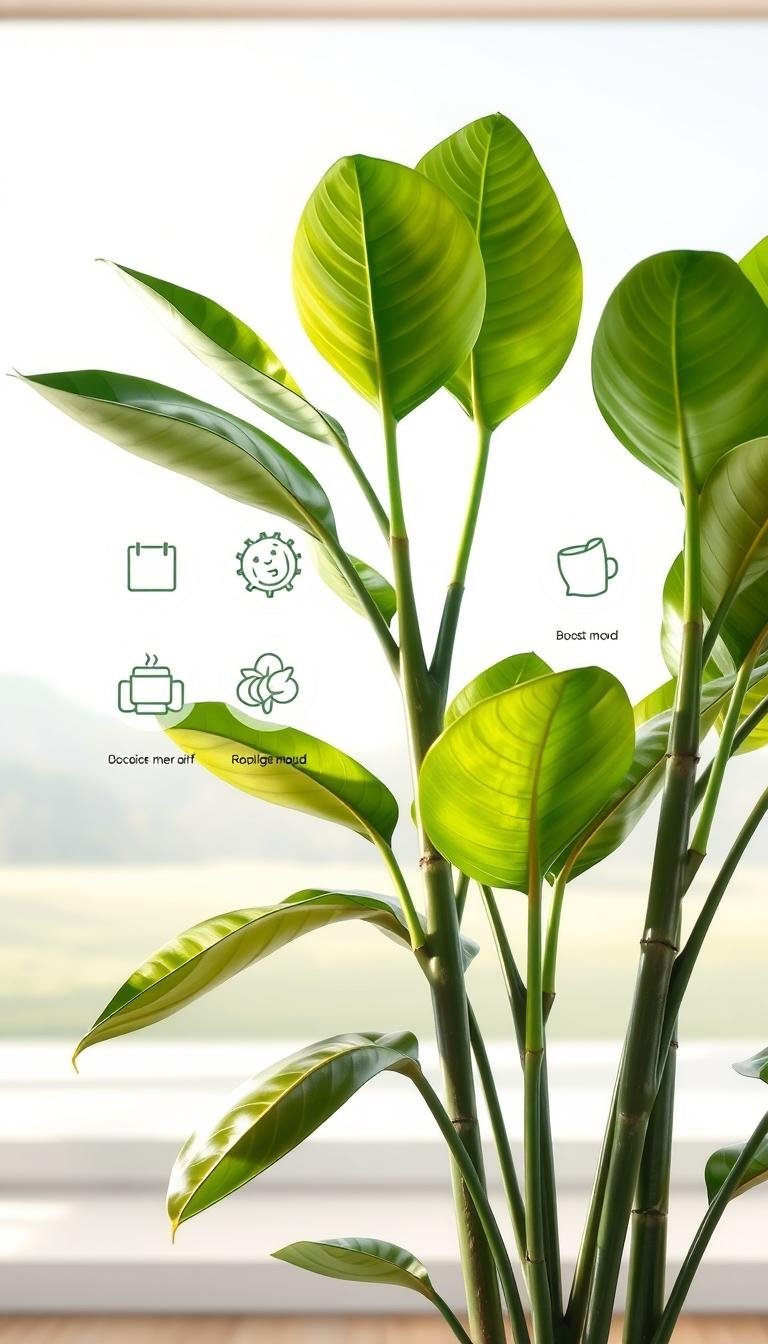This post may contain affiliate links. If you click and buy, we may earn a small commission at no extra cost to you. Learn more.
Spring plants bring vibrant life to gardens after winter’s quiet rest. This guide explores how seasonal plants can turn your outdoor space into a colorful, lively oasis. Whether you’re a seasoned gardener or just starting, discover tips to choose, plant, and care for flowers and vegetables that thrive in spring.
Learn about bulbs like tulips and daffodils, plus easy care methods for annuals and perennials. The article covers soil prep, pest prevention, and design ideas to make your garden stand out. Every section offers practical steps to create a thriving, eye-catching spring landscape.
Get ready to enjoy brighter, healthier gardens this season. Follow these expert recommendations to make the most of spring’s growing season. Let’s transform those bare spots into bursts of seasonal color together!
Contents
- 1 The Importance of Spring Plants for Your Garden
- 2 Ideal Conditions for Spring Planting
- 3 Top Colorful Spring Bulbs to Consider
- 4 Annual vs. Perennial Spring Plants
- 5 Best Spring Vegetables to Grow
- 6 Popular Spring Flowers for Stunning Displays
- 7 Planning Your Spring Garden Layout
- 8 Essential Care Tips for Spring Plants
- 9 Common Pests and Diseases in Spring Gardens
- 10 Incorporating Native Plants in Your Garden
- 11 Celebrating Spring with Gardening Communities
The Importance of Spring Plants for Your Garden
Spring plants turn gardens into vibrant places. They start the growing season and do more than just look good. They help local wildlife and make gardens stronger by planting in spring.
Seasonal Benefits of Planting
Spring plants bloom early, giving bees and butterflies much-needed food. Planting in spring matches nature’s cycle, helping roots grow strong before summer. The main benefits are:
- Early nectar sources for bees and butterflies after winter shortages
- Extended flowering periods that overlap with summer blooms
- Moist spring soil ideal for bulb and seedling establishment
Enhancing Biodiversity in Your Garden
“Diverse spring flora creates habitats that sustain entire food webs.”
The National Wildlife Federation says native spring plants like crocus or hepatica attract birds and insects. Mixing different plants boosts pollinator activity and naturally fights pests. Diverse plantings also:
- Attract birds seeking insects for nesting
- Strengthen soil health through varied root systems
Choosing a mix of annuals and perennials keeps your garden diverse all year. Planting in spring this way makes your garden sustainable and thriving.
Ideal Conditions for Spring Planting
For spring planting to succeed, start with the basics. First, check your soil and prepare your beds. This will help your plants grow strong. Here’s how to make your garden the perfect place for new life.
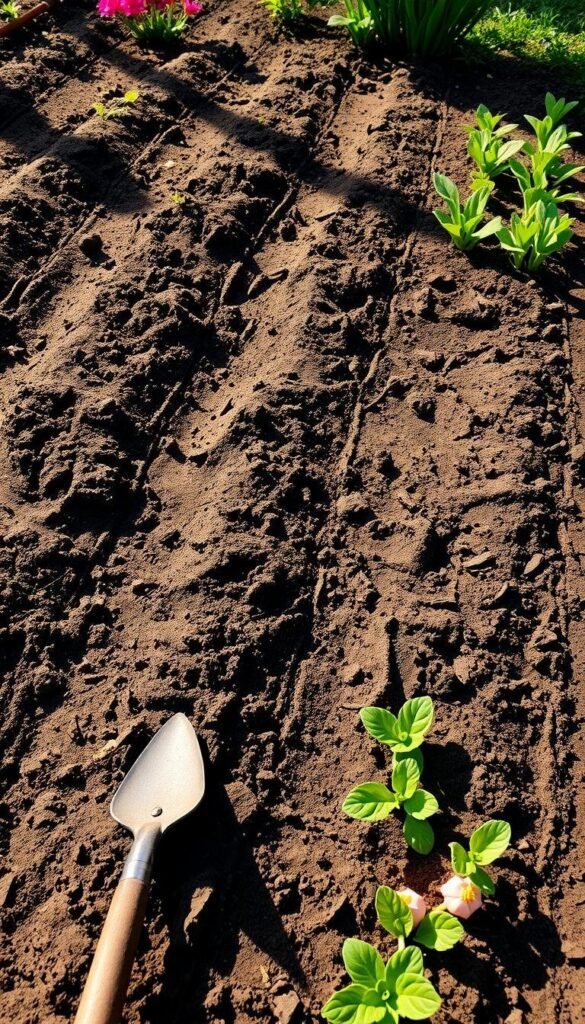
Understanding Soil Temperature
Soil temperature is key in spring. Cool-season crops like peas do best at 50–60°F. Tomatoes need soil above 60°F. Use a thermometer to check the soil 2–4 inches deep.
Wait until the temperature is steady. This prevents shocking your seeds or seedlings.
- Peas: 50–60°F (10–15°C)
- Tomatoes: 60°F (15.5°C) minimum
- Corn: 55–60°F (13–15°C)
How to Prepare Your Garden Bed
Begin by clearing out winter debris and loosening the soil. Test your soil pH with a kit from a garden store. Most plants like a pH of 6.0–7.0.
Add compost or aged manure to the soil. Then, gently till it to 8–10 inches deep. Don’t work the soil when it’s wet to avoid clumps.
Climate zones also play a role. In colder areas, wait until the frost risk goes away before planting. Southern zones might start planting earlier. Mulching helps keep moisture and warmth in the soil.
Are you ready to start? Proper preparation now means more blooms and harvests later. Next, find out which bulbs and vegetables are right for your climate.
Top Colorful Spring Bulbs to Consider
Planting best spring plants like bulbs brings instant color. These spring flowers are easy to care for and grow well in most U.S. areas. They come in bold colors and sweet scents, making them a classic choice.
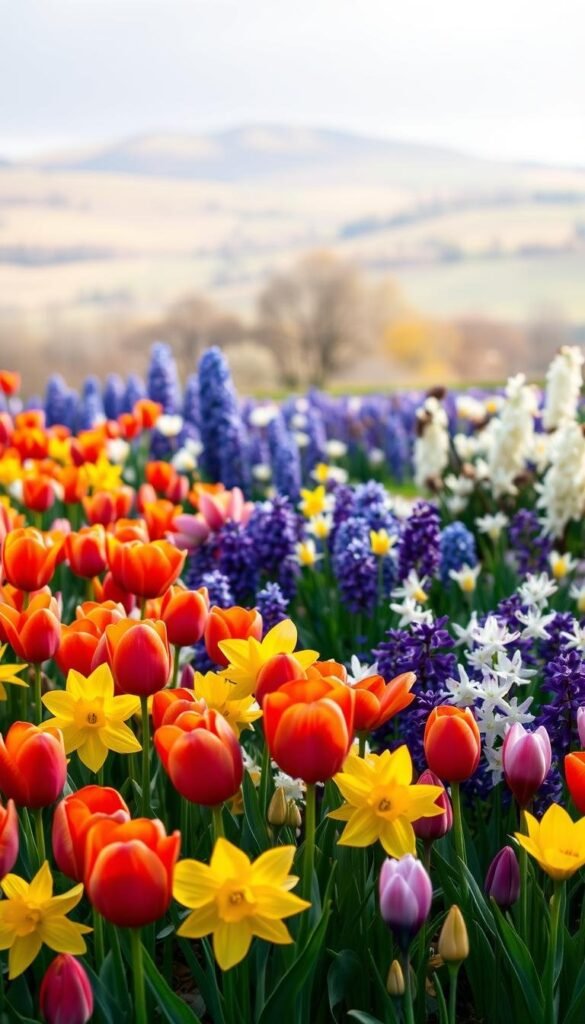
Tulips: Timeless Classics
Tulips come in almost every color, from bright red to unique ruffled varieties. Early-blooming Fosteriana types like ‘Red Emperor’ pair well with mid-season Triumph hybrids like ‘Spring Green’. For small spaces, try dwarf Darwin Hybrids like ‘Apricot Delight’. Plant them 6 inches deep in well-drained soil for strong stems.
Daffodils: Cheerful Yellow Bloomers
Daffodils come back every year, even deer and squirrels can’t stop them. Miniature Tazetta types like ‘Narcissus poeticus’ spread easily, while ‘King Alfred’ dazzles in large groups. For cooler zones 3-7, ‘Tahiti’ with its double flowers is a great choice. Their scent is lovely with tulips.
Hyacinths: Fragrant and Vibrant
Hyacinths have the best smell—perfect for rock gardens or under trees. Early bloomers like ‘Delft Blue’ and ‘Pink Pearl’ do well in zones 4-8. For pots, ‘Sweet Sultan’ is a good choice. Make sure to plant them 5 inches deep to support their tall stems.
Annual vs. Perennial Spring Plants
Choosing between annual and perennial spring plants shapes your garden’s yearly rhythm. Annuals give instant color but need replanting every year. Perennials grow back season after season. Knowing their traits helps balance beauty with effort.
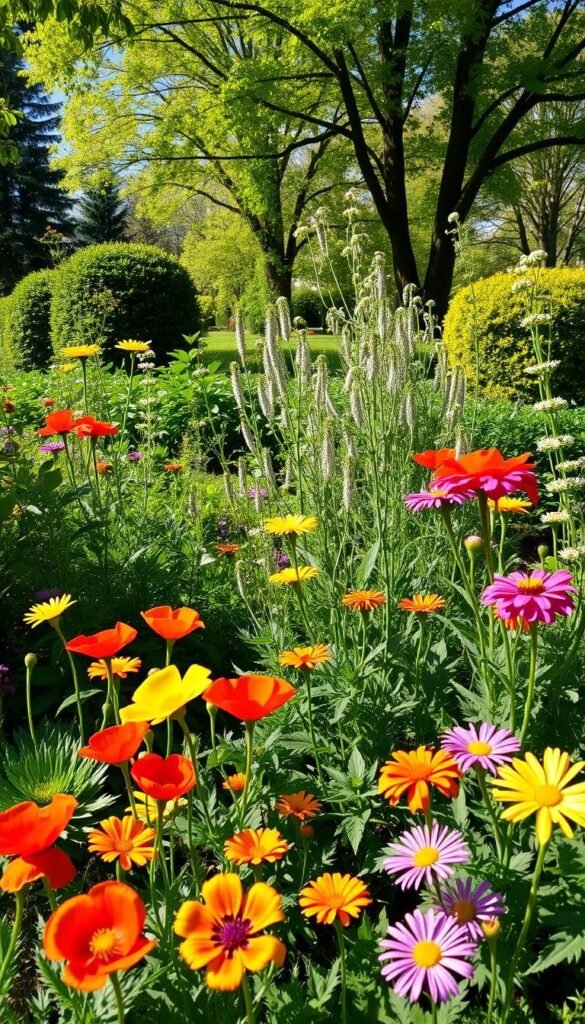
Characteristics of Annuals
Annuals bloom intensely for one season, making them perfect for temporary displays. They’re easy to plant and fit short-term designs. Popular spring plants like pansies, sweet peas, and calendula thrive in mild weather but fade with summer heat. Their fast growth suits renters or gardeners seeking yearly variety.
- Pansies: bloom in cool temps, tolerate light frost
- Sweet peas: trailing vines for containers or trellises
- Calendula: attracts pollinators and repels pests
Advantages of Perennials
Perennials invest in longevity. Once established, they return stronger each spring with minimal care. Top choices like hellebores and bleeding hearts build a garden’s foundation over years. Their slower growth rewards patience with reliable color.
- Hellebores: flower in late winter, thrive in shady spots
- Bleeding hearts: delicate blooms pair well with ferns
- Peonies: large blossoms add drama to borders
Mix both types for a dynamic garden. Annuals fill gaps while perennials form structure. Let your planting style—whether for quick impact or lasting beauty—guide your picks.
Best Spring Vegetables to Grow
Spring is not just for flowers; it’s also great for growing veggies. Whether you’re new to gardening or have experience, planting now means a big harvest by summer. These cool-weather crops are easy to grow and full of nutrients.
Cool-Season Crops
Start with veggies that do well in cooler soil and air. Leafy greens like lettuce and spinach grow best when it’s not too hot. Peas and radishes grow fast, adding color to your garden in no time. Broccoli and carrots planted early will be ready for summer meals. Here’s what to plant and when:
- Lettuce: Sow seeds 4–6 weeks before last frost; harvest in 45 days.
- Spinach: Plant in early spring for a continuous harvest until summer heat arrives.
- Peas: Direct-sow in early spring; trellis for vertical growth.
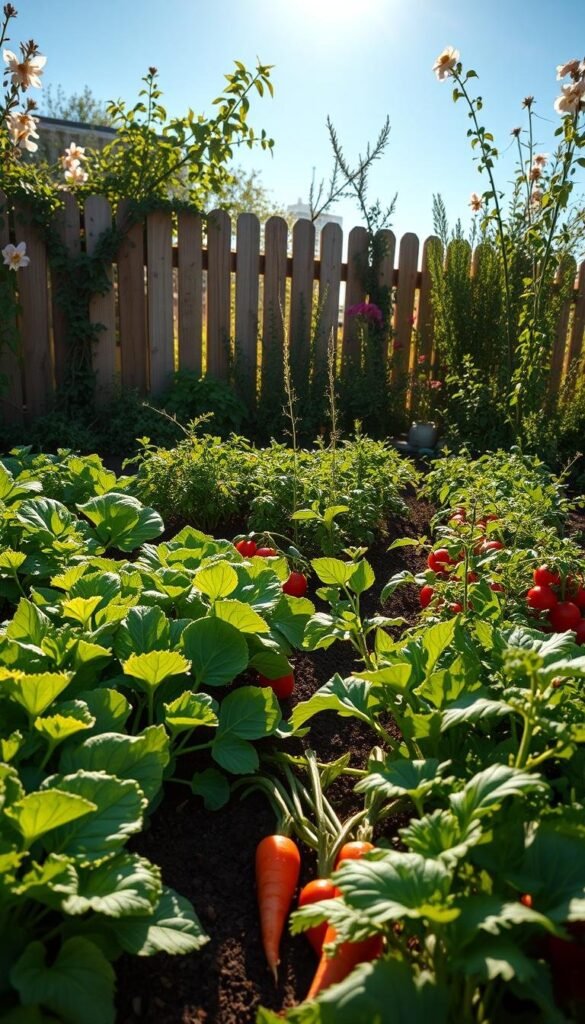
Tips for Starting Seeds Indoors
Starting seeds indoors gives them a head start. Use peat pots or seed trays with sterile soil mix. Keep the temperature between 65–75°F for the best germination. Follow these steps:
- Plant seeds 6–8 weeks before last frost date.
- Use grow lights to prevent leggy stems.
- Water from below to avoid damping off disease.
Hardening off is key—move seedlings outdoors gradually over a week. Watch for pests like aphids; wipe leaves with soapy water if spotted. With these spring gardening tips, even small spaces can yield fresh veggies all season.
Popular Spring Flowers for Stunning Displays
Spring flowers make gardens come alive with color and scent. Among the popular spring plants, three are known for their beauty and ability to adapt. These spring flowers do well in different conditions, making them great for any outdoor area.
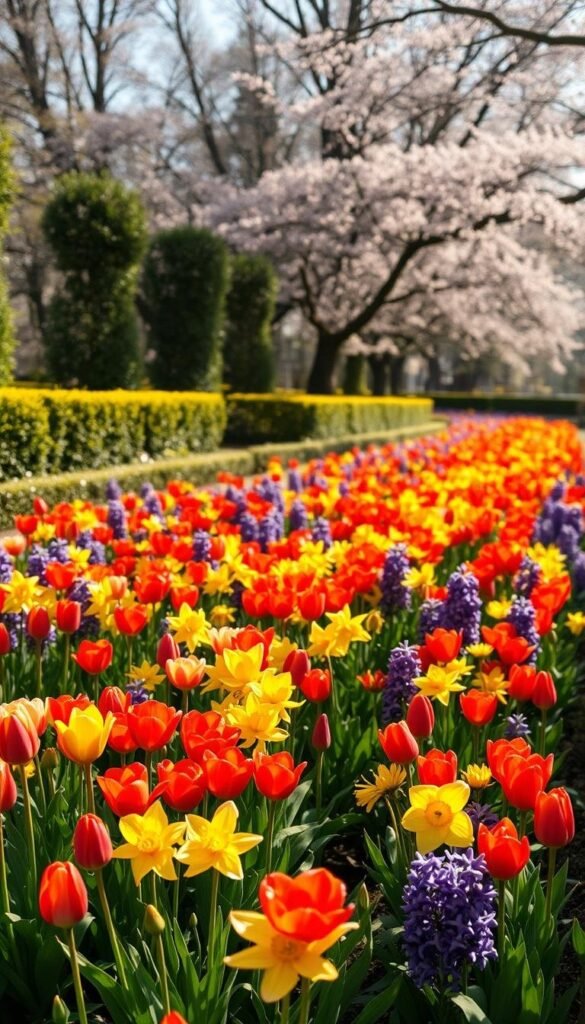
Pansies: Versatile and Resilient
Pansies can handle cool weather, blooming well into late spring. Their faces, with bold patterns in colors like purple, yellow, and white, add charm. They look good in containers or borders. To keep them blooming, trim off faded flowers.
Snapdragons: Tall and Bold
Snapdragons add height with their spikes of blooms in red, pink, or orange. Dwarf varieties grow up to 12 inches, while tall ones can reach 3 feet. Their strong stems are perfect for floral arrangements, adding structure to bouquets.
Primroses: Early Blooming Beauties
Primroses start blooming as early as late winter, with soft pastel petals in clusters. They do best in shaded spots. Some species, like Primula vulgaris, like moist soil, while others, like Primula acaulis, prefer drier conditions.
Pair pansies with creeping thyme for texture contrast. Snapdragons look great with low-growing alyssum for layered looks. For primroses, add ferns to enhance their woodland look. These spring flowers create lasting color when chosen wisely.
Planning Your Spring Garden Layout
Spring gardening tips begin with smart planning. Whether you’re creating a small border or a full garden, a well-thought-out layout enhances beauty and plant health. Begin by mapping out spaces for blooms and foliage to maximize their impact.
Companion Planting Strategies
Pair plants that support each other. For example:
- Plant marigolds near tulips to deter aphids.
- Grow peas alongside carrots—legumes add nitrogen to soil, benefiting root vegetables.
- Interplant early-blooming bulbs with taller perennials to hide fading foliage.
Seasonal Color Schemes
Choose harmonious hues using spring gardening tips. Mix:
- Purple alliums with yellow daffodils for bold contrast.
- Pink peonies and white lilacs for soft pastel blends.
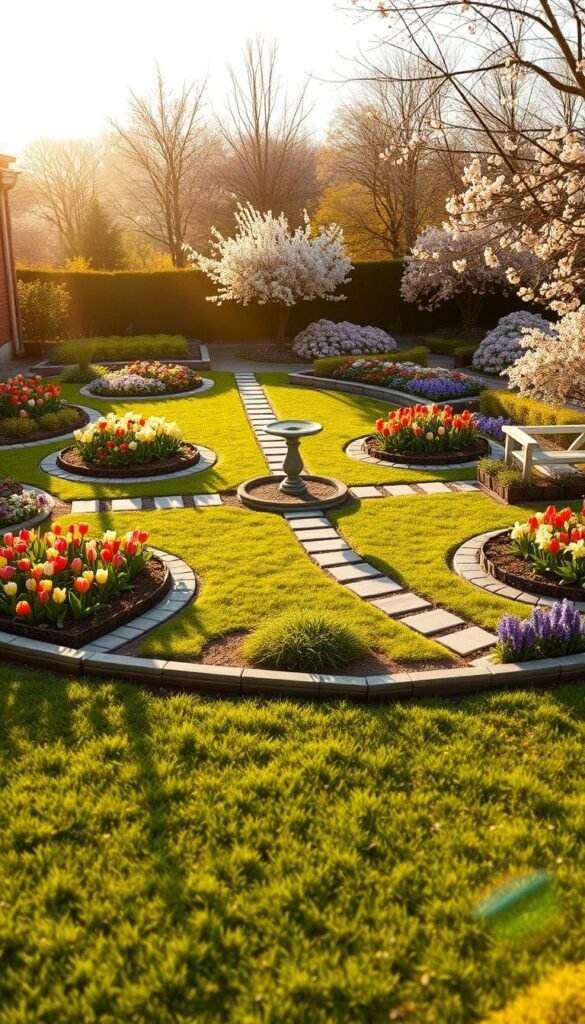
“Color echoes—repeating shades in different textures—create unity without monotony.”
Plan for bloom-time overlap. Use succession planting in spring to ensure color transitions smoothly from early crocus to late-flowering shrubs. Mark planting dates on a calendar and group plants by height to avoid blocking sunlight.
Essential Care Tips for Spring Plants
Learning how to care for spring plants is key to a thriving garden. These spring gardening tips will help you water and feed your plants right. This way, you’ll get beautiful blooms and healthy leaves.
Watering Techniques for Optimal Growth
Spring weather changes a lot, so you need to adjust how you water. Here’s what to do:
- Water deeply but less often to help roots grow strong.
- Don’t water in the evening to stop fungus; water in the morning instead.
- Check the soil moisture by feeling it 1–2 inches down before you water.
Yellow leaves mean you’re watering too much. Wilting means you’re not watering enough. Clay soils hold water longer than sandy ones, so adjust your watering based on your soil type.
Fertilizing in the Spring
When you fertilize is important. Do it early, before flowers start to grow. Here are some options:
- Slow-release granules for steady food.
- Organic compost or manure for a gentle feed.
- Special blends for acid-loving plants like azaleas.
Stick to the instructions on the fertilizer package to avoid harming your plants. Too much fertilizer can weaken them. A balanced 10-10-10 formula is good for most spring plants.
Common Pests and Diseases in Spring Gardens
Spring’s beauty can face hidden threats. To protect your garden, start by spotting problems early. Here’s how to keep your garden healthy without harming the environment.
Identifying Early Signs of Trouble
Look out for these warning signs:
- Aphids: curled leaves or sticky residue
- Slugs: chewed holes in foliage
- Powdery mildew: white powdery coatings on leaves
- Root rot: yellow leaves and mushy stems
Natural Pest Control Options
Try these eco-friendly solutions:
- Introduce beneficial insects like ladybugs to eat aphids.
- Plant marigolds near vulnerable spring plants to deter pests.
- Use diatomaceous earth as a natural barrier against slugs.
- Apply neem oil sprays to combat fungal issues.
“Healthy soil and diversity prevent many garden problems.” – American Horticultural Society
Keeping soil healthy and rotating crops also helps. Regular checks and quick action ensure your garden stays healthy all season.
Incorporating Native Plants in Your Garden
Adding native plants to your spring garden is a smart move. These best spring plants fit right into local climates. They use less water and need less care, making your garden eco-friendly.
“Native plants create living connections to local ecosystems.”
Benefits of Native Spring Flora
Native plants do more than add color. They:
- Support local pollinators like butterflies and bees
- Require less care once established
- Protect soil and prevent erosion
These plants grow well without harmful pesticides. This makes your garden safe for both people and wildlife.
Recommended Native Plants for Every Region
Choose plants that match your area:
- Eastern U.S.: Bloodroot and trillium for shady woodlands
- Western U.S.: Penstemons and California poppies for sunny spots
- Northeast: Wild columbine and hepatica
- Southwest: Desert marigold and ocotillo
Combine native bulbs and perennials with other seasonal plants. This creates a colorful, easy-to-care-for garden.
Celebrating Spring with Gardening Communities
Gardening is all about sharing knowledge. Whether you’re planting spring flowers or learning new tips, connecting with others makes it better. Join local and online groups to improve your skills and enjoy spring together.
Local Gardening Clubs and Resources
Look for local groups like master gardener programs or community gardens. They’re great for swapping plants and learning from neighbors. Many counties host workshops on spring flowers, and plant swaps help you grow more varieties.
Check community boards or websites like Garden.org for events. These groups give advice specific to your area’s climate and soil. This makes your gardening tips more effective.
Online Gardening Forums and Tips
Forums like GardenWeb and social media groups like #SpringGardening on Instagram are perfect for sharing photos and asking questions. University extensions, including USDA, offer guides on growing techniques. Apps like Gardenify track your plants and connect you with others worldwide.
Talking about your gardening journey with others can make your garden bloom. It turns your garden into a beautiful spring masterpiece.
To bring you cozy inspiration more efficiently, we sometimes use AI to assist in content creation — but every word and idea is carefully shaped by our team. See our AI Disclosure for more info.

